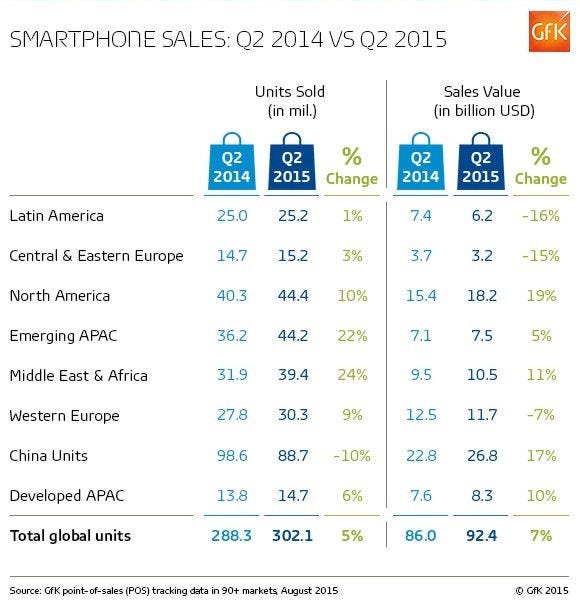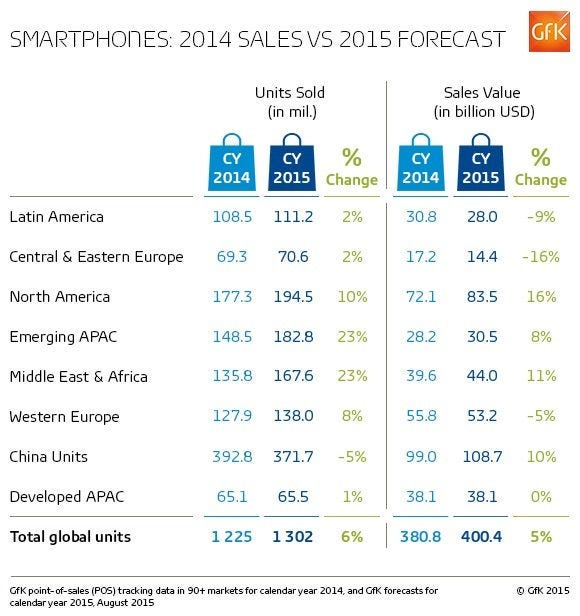Global 4G smartphone sales share doublesGlobal 4G smartphone sales share doubles
The latest global smartphone sales data from market researcher GfK reveals that 58% of smartphones sold in Q2 2014 were 4G enabled.
August 17, 2015

The latest global smartphone sales data from market researcher GfK reveals that 58% of smartphones sold in Q2 2014 were 4G enabled.
Overall global smartphone sales growth continues to slow, thanks mainly to the ongoing contraction in China. Latin America, which for the past year has been one of the major drivers of global growth, seems to have stalled and it’s only emerging markets in APAC and Africa that seem to be keeping growth in positive territory.
“India is expected to be the largest contributor of absolute smartphone unit growth globally this year,” said Kevin Walsh of GfK. “The main reason behind this is the currently low smartphone penetration in the market together with a significant intensification of the competition amongst the smartphone vendors, which will drive ASP erosion allowing more affordable devices in the market.
“The first half of the year has seen macro events providing headwinds to topline demand in regions like C&E. Europe, LATAM and China. However, the underlying trend of consumers optimizing their digital consumption by screen size, within affordability constraints, continues in all regions. This trend can be seen from TV’s down to smartphones.
“In smartphones, it manifests in trends like price point polarization in the US, the rapid screen-size increases in emerging markets and phablet market development. These trends are forecast to continue to the end of year but we see new inflection points and market drivers for 2016.”
While the transition from feature phones to smartphones seems to be complete in China, the world’s largest smartphone market is still in the middle of a 4G upgrade cycle. Global 4G smartphone unit growth of 129% year-on-year owes a lot to this trend in China. The slowdown in Latin America is blamed mainly on Brazil and the political situation in Ukraine is the main reason for Eastern Europe’s struggles.
“Weak macroeconomic trends will continue across a number of major countries such as Brazil, Russia and China, but recoveries when they come are often faster than expected especially for tech sectors,” said Walsh. “In addition, we are still a long way from saturation in emerging market while adjacent industries to the smartphone fuel the next round of growth generally complementing and in some cases cannibalizing smartphone growth.”


About the Author
You May Also Like










.png?width=300&auto=webp&quality=80&disable=upscale)


_1.jpg?width=300&auto=webp&quality=80&disable=upscale)